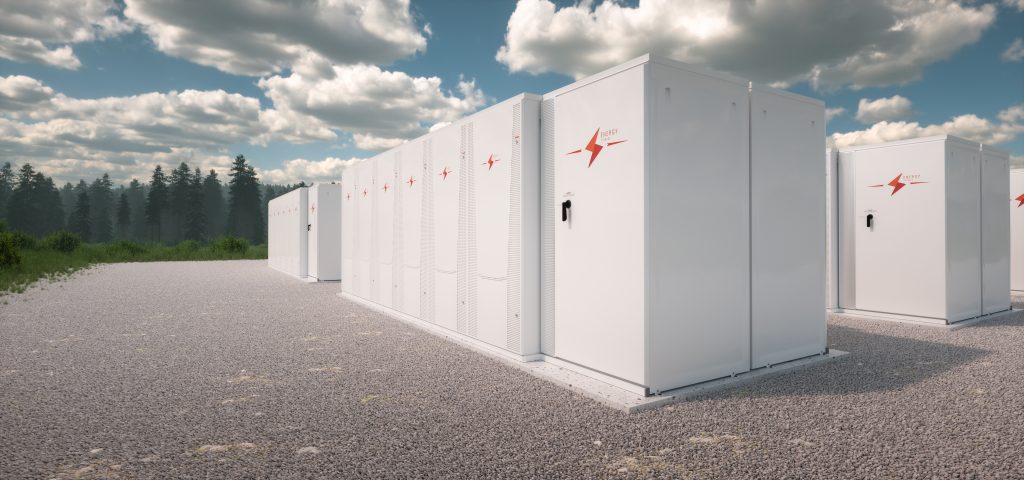
Battery Storage: Planning Law Changed to allow More Developments
Planning law in the UK has been changed to allow energy storage projects over 50MW to come on line without going through the national planning process. This could pave the way for a major expansion of battery storage facilities across our towns and cities, to support green energy use in new builds and to balance our energy demand.
In July last year, with little fanfare, minsters passed secondary legislation that will allow battery storage facilities to bypass the Nationally Significant Infrastructure Project (NSIP) process in the UK. The change to the Infrastructure Planning (Electricity Storage Facilities) Order 2020 passed into law on 4th November and then came into force on 2nd December 2020. This means that applications can now be progressed under the comparatively quicker Town and Country Planning Act 1990 (TCPA) regime.
The previous system was cited as a barrier due to the time and cost of the process – which could add up to three years to a project’s development timeline, according to the Energy Storage Network.
Meeting Demand and Balancing the Grid
This change reflects the evolution of storage technologies in recent years. Because the majority of these projects are not deemed as national critical infrastructure, like a nuclear power station for example, but are localised deployments with limited planning and environmental impacts, they are more appropriately assessed at a local level.
This intervention by the government could enable the UK to reach its target of net zero carbon emissions by 2050. This could be achieved with either a high proportion of large-scale, centralised renewable generation and storage, or with more of a priority on smaller community schemes such as locally owned wind turbines, solar panels or battery sites on estates.
The change in the law could lead to over 100 large scale battery installations now being built – three times the current number in operation.
As demand for electricity grows in the grid, with more people switching to electric vehicles and the decision to switch all new build developments from gas central heating to electric or air source heat pump systems, so does the need to balance demand across the Grid.
There are currently more than 13.5G of battery storage projects in the pipeline according to Solar Media’s UK Battery Storage Project Database Report. Of this 1.3GW is ready to build, 5.7GW with planning permission and a further 6.5GW proposed.
The aim to combine local solar and wind installations with battery storage and create a more local network of storage facilities – a more modern, but larger scale version of the electricity sub-station that you see today in every neighbourhood – and make residential and commercial property more resilient whether the sun is shining, the wind is blowing or not.
Current Large Scale Schemes
At the end of 2018, Centrica announced the completion of its 49MW Roosecote battery storage project, 18 months after construction started. With a maximum capacity output of 49 MW, the equivalent of 123,000 batteries, Roosecote is one of the largest battery storage facilities in Europe. It stores energy and discharges it back onto the network in response to fluctuations in electricity supply and demand, given the unreliability of renewable energy generation, such as solar and wind.
The development is also notable as it is on the site of a former coal-fired power station built in 1953 and was converted to a gas-fired power station in the 1990s but eventually reached the end of its life. Not only is it a great example of reuse and repurpose of an existing brownfield site, but it marks the evolution of our energy locations in the UK and could act as a blueprint for all redevelopments on existing gas fired stations in the future.
The bar has been raised in Essex now, with the approval of a 320MW storage facility on the Thames Estuary at the London Gateway port. At ten times the size, construction is expected to get underway in 2022 with a completion in 2024.
Keep it Local?
But a cheaper solution may be in the backyards of our homes and fuel stations. As we convert to electric vehicles and need to power our homes with greener energy, housing developments may have to incorporate solar panels or roof tiles and wall battery storage solutions as part of the development spec. If we are plugging our cars into this grid, then this can act as a more powerful redistribution of power into the network, as each car effectively acts as a power pack.
If these aren’t included in development specs due to cost, it may be that there is a corner of the development that has its own battery storage unit, rather like the electricity sub-stations of old, from which the development can source most of its power. For existing neighbourhoods, if we are to build a nationwide infrastructure, then space will have to be made available to incorporate these if we are to wean ourselves off the gas main. The question is, where do these battery storage hubs go and could they have any human impacts?
Living with Electricity
There has always been public concern about living close to a pylon or electricity sub-station due to the presence of electro-magnetic fields (EMFs). Most sub-stations are small and are shielded by a fence or brick wall in a typical urban area and this is usually enough to have little or no effect in local residentsIn the past, concern has been expressed about the elevated risk of childhood leukemia. Research studies, highlighted by 2013 Government Guidance, indicated that up to 10% of reported cases may have had some connection to EMFs, but the results were not conclusive. But that hasn’t stopped public perception – Oxford Brookes University in 2005 published a study that showed that the close presence of a substation could reduce the number of potential buyers by up to 63%, depending on the type of property concerned and the size and visibility of the substation. The study reported that visible substations and cables reduce the value of a property, with the percentage reduction dependent on the type of property.
The Government sets guidelines for exposure to EMFs in the UK on advice from the Health Protection Agency (HPA). In March 2004 the UK decided to adopt the 1998 guidelines published by the International Commission on Non-Ionizing Radiation Protection (ICNIRP) and this policy was reaffirmed by a Written Ministerial Statement in October 2009. These guidelines also form the basis of a European Union Recommendation on public exposure and a Directive on occupational exposure
In 2012, National Grid published a document that highlighted that the larger capacity pylons could operate at up to the guideline exposure limit of 100 microteslas if you were directly underneath them. Smaller pylons operate at 40 microteslas and substations at just 1-2 Microteslas, about the same as many household appliances. So, in practical terms it is the location of pylons that are the only major background factor.
Technology has moved on since research on EMFs were published and it is likely that future battery storage developments will have enhanced shielding protections if they are close to properties. Local Authorities and green energy companies may look to install these facilities in pockets of existing redundant brownfield land or on industrial estates that incorporate existing waste management or energy generating functions to minimise community impact – but that may have to be offset by higher costs to get them to homes and businesses.
It will be interesting to see how the acceleration of these new battery storage developments pans out, where they are proposed and the public acceptance of them and how they will look to power and balance our community energy needs into the future.
Keeping up with Changes
With property purchase decisions now often made for 20-30 years hence, homebuyers must consider how the local area’s energy needs and changes could affect their habitat.
Future Climate Info provides conveyancers and their clients with the latest insight on energy and infrastructure changes that may affect the vicinity of a property.
As new schemes come online through planning, our Premium Environmental Report captures and alerts these in a clear and concise way so you can make an informed decision on whether your client’s investment could be harmed or improved.
Call us on 01732 755 180 or email info@futureclimateinfo.com
References
Try before you buy
To take advantage of a trial free order of your first environmental report, please complete the enquiry form and we will get back to you as soon as possible. We will need to take more details of the property or site and ask some more questions about your firm and the transaction.

